- Home
- Steven Becker
Wood's Fury Page 3
Wood's Fury Read online
Page 3
“Let’s get him aboard your boat,” Mac said to the officer.
“It’d be a lot easier and better for the turtle to just pull him onto your dive platform. Less chance of getting dehydrated and we won’t have to handle him,” Jen said
Mac nodded and stepped onto the dive platform with Jen. He eyed the FWC officer who had his hands on his hips, watching, and turned back to the turtle. Following Jen’s instructions, they pulled the turtle onto the platform.
“I’ll ride back here with him. Can you keep the speed to less than ten knots?” Jen asked.
“Not a chance girl. Carbon Monoxide’ll get you both back there. In fact, he was worried about turtle too. “Tru, get the lobster sled,” he called out and stepped back onto the deck where he unzipped a canvas bag strapped to the roof of the wheelhouse, and removed two life jackets.
Trufante emerged from the cabin with a piece of plywood attached to a nylon rope. He uncoiled the line and secured the PFDs to the sled to make it more buoyant. After inspecting his work, he tossed it and the piece of wood shaped like a small sled behind the boat. Mac used the sled for scouting new lobster spots. Being pulled a hundred feet behind the boat, with his snorkeling gear, he could see the bottom clearly and identify hot spots. Now, sliding in the water with Jen, he hoped it would be as useful to transport the turtle. Together they secured the turtle to the sled and climbed back aboard.
You coming with us, Pamela?” Mac asked, already knowing the answer, but wanting to get the FWC officer off his deck.
“I’ll need a statement, Travis,” the officer said, as he climbed over the gunwales and untied the lines holding the boats together.
“Yeah, always do,” Mac said. “Can I email it to you?”
“Tomorrow at the latest. If I don’t see your ugly mug in my office, I’ll take a ride out to that island of yours and see what y’all got going on out there.”
Mac had nothing to hide, but nodded, vowing to do it tonight. The boats separated, and he waited until the FWC boat was underway before turning the wheel and gradually accelerating. When he hit ten knots, he looked back and saw a thumbs up from Jen. Holding the speed, he started the trip back to the Turtle Hospital.
Four
Sloan scanned the water as he paced the deck of his motorsailer. To him, the boat was a trade-off between what was expected of a Princeton man—a sailboat—and what he could tolerate—a motor yacht. Since he had bought the fifty-footer the sails had rarely felt the breeze they were designed to catch, despite the fact they were totally automated. The masts were purely for show, allowing him to move in “yacht” club circles without the skeptical comments about being trawler trash. The pretense was for his father, Juan Cristobal, as well. JC, as he was nicknamed, was hardly a sailor and rarely set foot on boats. Sloan knew the mid six-figure purchase would irritate him to no end. The old man, a prosperous fishmonger in Key West, had made his fortune with a reputation for turning a blind eye to under-sized fish, known as shorts, and out-of-season catches. But despite the lucrative business, his taste for expensive wives, and his obsession in pushing his son up the social ladder in an effort to give him some legitimacy, he remained a fishmonger.
Sloan had been sheltered from the family business, but that hadn’t taken the pressure off to perform on his own. Though a substantial stipend was deposited in his account every month, his genes made him more similar to his father than he would have liked. His taste for expensive women and a predilection toward the illegal had forced him to use the seas in a different way from his father.
Running west of Islamorada, he skirted the inside edge of the Gulf Stream to avoid the pull of its six-knot current. The sixty-mile-wide oceanic river, running from Cuba up the Atlantic coast, was within a few miles of the infamous reef that ran the length of the Keys. He left the stunning brunette to sun herself alone on the foredeck and returned to the spacious cockpit. The high-tech array of electronics glared back at him from the helm. Filtering out the chartplotter and depth sounder, he studied the radar screen. The signal was not where he had expected it, but not far enough away for concern. There were massive amounts of data on the migratory routes of specific turtles, and he knew what to expect. There were variables to factor in, especially currents and wind, and he sat down at the chart table to figure out why the transmitters were further east than he had estimated.
But after plotting the wind and currents, he decided that something was indeed wrong; the turtle was not where he had expected it. He had planned the rendezvous just west of Marathon. After relieving the turtle of its additional burden, the proximity to the Turtle Hospital would give him an opportunity to showcase his philanthropic efforts after he rescued the turtle and wrote a big check for its recovery. It would score points all around, especially with the near-naked woman on the foredeck. As yet, she hadn’t questioned the coincidence of running into so many turtles in distress, and he doubted she ever would.
With the blinking light on the screen less than a mile away, he noted the course, put away the charts, and went back to the helm. Adjusting his bearing, he took control from the autopilot and steered toward the horizon. The two-foot seas made it hard to spot the antennas, and he was almost on top of them when they finally came into view. When he saw the two buoys floating by themselves, he cursed under his breath. The knowledge that he was correct, and the beacon was in the wrong place, was no consolation for the loss of the product.
Mac cut the wheel in the general direction of Boot Key Harbor, and Ghost Runner soon passed under the Seven Mile Bridge. Turning to starboard, he headed east and ran until he saw the hook-shaped breakwater that marked the entrance to the small cove housing the Turtle Hospital. The empty dock answered his question about why they had called the FWC to assist with the rescue. He guided the boat to the seawall and called for Trufante to drop the fenders and ready the lines. The place looked deserted and he turned to Jen. “You need some help?”
Using the rope, she pulled the turtle back to the dive platform. “Yeah, I’ll grab a gurney and be back in a minute. We had a release earlier, guess they’re not back yet.” Though they had several permanent residents who were unable to be integrated back into the wild, the mission of the hospital was rehabilitate and release.
That explained why the boat wasn’t there. Mac stepped out on the dive platform and stood by the turtle. It didn’t appear any worse for the trip.
“I think we should call him Wood,” Pamela said, stepping beside him.
Mac swallowed the comment he was about to make, relieved to see Jen wheeling a gurney toward them. Without answering, he stepped past Pamela, hopped onto the dock, and went to help Jen.
“We have a lift over there.” Jen pointed at a small winch. “If you can back up, I’ll swing it down to you.”
Mac left her and went back to the boat. With only ten feet to back up, he didn’t need the engine, and used the lines to walk the trawler to within reach of the winch’s boom. Jen released the cable, dropping the sling into the water. She climbed down to the boat and directed Pamela and Trufante to guide the turtle from the dive platform through the lines and onto the canvas, while she and Mac worked it from the water.
Mac grimaced as he slid into the dark-green water. He had no fear of the open ocean, but the inshore waters scared him. There were more sharks in the small coves and canals than on the reef. But the turtle looked at him again, and as if it spoke to him, he relaxed and helped Jen manipulate the sling to surround the turtle’s body. Once she was satisfied, Jen climbed up a ladder by the dock and started cranking the winch handle. The turtle rose from the water, and once it was clear of the dock, she swung the boom toward the gurney and released the tension on the cable.
“Pamela, can you help us out?” Jen asked, as she started to wheel the gurney down the sidewalk of the facility. With Mac’s help they pushed the turtle past the large black tanks that held both the resident and transient turtles, and toward the old motel that had been renovated to house the rescue techs. Jen walked th
rough a breezeway and asked Pamela to open the double doors to the operating room. Once inside, she got right to work. Mac felt useless in this environment, and with both his boxes full of fish to be cleaned, he thanked her and went back to the boat.
Trufante was nowhere to be found, which Mac found pretty unusual in advance of a good payday. Mac waited for a few minutes, then called Tru’s cell phone. The call went to voicemail, and he disconnected without leaving a message. With the sun creeping toward the horizon, Mac decided the fish were iced well enough that they could wait until tomorrow. It was actually a rare occurrence when commercial fishermen cleaned their catch the same day they caught it. What was sold as “fresh” in stores was often a week old. Properly bled and iced, a quality fish would stay “fresh” for well over a week without being frozen.
Mac texted Trufante to meet him at the wholesaler by Keys Fisheries in the morning, dropped the lines, and pulled out of the canal. As he turned toward the small channel, something weighed over him that he couldn’t put his finger on, but the feeling passed when he cleared the breakwater and pushed down on the throttle. The big diesel paused for a second before reacting and powering the boat up on plane. Mac smiled as the wind blew through what was left of his hair, and he steered toward home.
Mel met him on the dock, and helped tie off the lines. Climbing aboard, she inspected the catch. “That’ll do.” She selected a football-sized blackfin for dinner and a large dolphin for the freezer. “Why didn’t you clean them?”
Mac pulled the fish out of the box one at a time, then cut a slot behind the gill and pectoral fin on each to bleed them. Using the saltwater wash down hose, he sprayed off the fish and deck. When the tuna were all bled, he dumped a box of kosher salt on top of the crushed ice in the insulated bin, added some saltwater and mixed the ingredients with the ice to create a slurry. One at a time, he slid the fish into the mixture and closed the lid. The dolphinfish and tuna Mel had selected remained on deck to be cleaned now.
“Can you hand me the bucket by the transom?” Mac looked up before starting the first cut.
“What bucket?”
“There should be a bucket with a rope handle back there.” Though the boat showed its years and hard use, Mac was fastidious about clean and clear decks. “Saw it before.” He leaned over the dolphin and outlined the perimeter of the fillet with the tip of the knife.
“Nope. There’s one below I can grab.” Mel started for the wheelhouse and returned with a white bucket.
“That’ll do. Can you fill it with some of the slurry?” Mac made the last cut, releasing the fillet from the body just as Mel brought the bucket to him. He slid the fillet in, turned the fish over, and started on the other side. As he slid the sharp blade across the backbone of the fish, he realized why the packages had a wake trailing behind them when Trufante cut them free of the turtle.
Trufante would have some decisions to make, but first he needed to recover the packages and see what they contained. He didn’t blame Mac for ditching them; that was the right decision. Rubbing his thumb against the stub of his middle finger, he remembered how a similar situation had cost him part of the digit. Free-lining for yellowtail, once one of his favorite pastimes, hadn’t been the same since he had lost it to a chum grinder. This time he would be smarter, and offload the package contents to one person, instead of trying to maximize the profit and sell smaller quantities.
It was all good, as long as he could locate it, and with the bucket acting as a sea anchor, he thought he had a good chance. He’d run down to the boat ramp to retrieve his motorcycle the minute Pamela and Mac had disappeared into the Turtle Hospital. Now, cruising down US 1, he turned right at the light for Sombrero Beach Road. Passing a bunch of new houses on the right, and Marathon High School on the left, he slowed and turned right. The house was well over his pay grade, but the Keys had taken much longer than most of the country to recover from the 2008 crash, and Pamela had bought it in a short sale a few years ago.
One of the benefits of the house was the canal in back. Parking the bike by a small palm, he strode toward the dock and his center console. Pushing the boat faster than he should through the maze of canals, he passed through the mouth of Sister Creek twenty minutes later. With the sun falling behind him, he turned the wheel until the compass settled on 210 degrees and pushed down the throttles. The boat reacted immediately and he was soon cruising at thirty-five knots. The course was his best guess at where the packages would have drifted. He knew it was a big ocean and the chances were small, but his eyes were good, and his luck was often outstanding. What he did after the gods blessed him often got him in trouble, though.
The steel lighthouse marking Sombrero Reef passed to port, and after another few miles, he stood on the rail in front of the leaning post to add to his already tall vantage point. Scanning the water, he cruised to the 420-foot contour line on the chart plotter and slowed. That was the depth where they had found the turtle. As the boat drifted, he studied the currents. Even this far offshore, the tides affected things, and he had to go back a few hours in time, adding another layer of complexity to the already complicated equation. Fortunately, the wind had dropped, which both slowed the drift and made it easier to see because of the smaller waves. Like an ancient mariner, he determined the course the packages would have traveled, and standing tall, followed the line he had plotted in his head.
It had been a little over three hours since they had freed the turtle and set the packages adrift. Estimating that the current was running about a knot an hour, he cruised quickly for a few miles. Seeing nothing, he slowed and scanned the water. He was on high alert, knowing that the waning daylight would only make the search harder.
Darkness was closing in, but he was undeterred, knowing that by tomorrow morning the packages would be in Miami or even farther north if they edged into the Gulf Stream. It was now or never. Grabbing the stainless-steel supports of the T-top, he climbed onto the gunwale and used his foot to steer. The added height helped, and the water, now turning black as the light faded, had only small wind ripples, making it easy to see any disturbance.
A school of birds swooped and dove just ahead. Tru identified them as “tuna” birds, the light-colored gulls that followed fast-moving schools of skipjack or bonita. Generally, it was the larger, darker frigate birds a fisherman wanted to find, but in this case, his interest was piqued. Birds found bait, and bait liked the cover of weed-lines or anything else floating on the surface. It was the “anything” else that had him excited, and he jumped down and accelerated towards the birds.
The silver backs of a school of bonito were breaking the surface as the tuna feasted on the bait, but that wasn’t what caught his eye. The attractant that had brought the bait, the birds, and the tuna was the raft of seaweed—and the packages.
Five
The pair of buoys bobbed on the waves and the answer to Sloan’s questions as to why they had moved so quickly became evident. Considering the drag of the product, and inevitable detritus of seaweed and trash the dry-bags would have accumulated, he would have expected them to be well west of the Seven Mile Bridge. That was his preferred pickup point. Marathon marked the geographical midpoint of the Keys. The bridge was also the demarcation point between the busier, more commercial side of the island chain, and the quieter Lower Keys. The countless islands and channels on both the ocean and gulf sides west of the bridge, between Bahia Honda and Big Coppitt Key, were still prime smuggling waters. Aerial surveillance was just about the only way to see what went on in the remote and quiet backwaters leading to Key West, and in many cases the overgrown flora prevented observation even from above. From the early pirates roaming the Gulf Stream in search of Spanish galleons to the latter-day drug smugglers, the winding, mangrove-covered passes were ideal places to hide. Based on the data of several trips, the turtle should have been there. With his education and experience, Sloan was rarely wrong.
JC had insisted on his going to college, hoping an Ivy League school for his son w
as a way of eschewing the fishmonger stereotype he carried. Sloan had fought the old man until discovering that even the Ivy League schools had party frats. Graduating with a degree in oceanography, he had accomplished what JC had intended, but the prestigious school couldn’t destroy the mutant gene that took him to the dark side.
As far as his father knew, he was a playboy philanthropist, which was part of the old man’s scheme. It had worked to a degree; his son’s connections had finally gotten him accepted to the clubs that had so often tossed his application aside. His father sent a monthly stipend that he deemed sufficient to maintain Sloan’s lifestyle, but JC had never asked for his opinion on the amount, and with a staggering financial shortfall every month, Sloan had turned to smuggling to supplement the payments. The new boat he had purchased was a perfect cover. Gearing his philanthropic efforts toward helping the causes that his father’s business hurt was another way of justifying his way of life, and at the same time getting a dig in at the old man. Using the education forced on him to enhance his operation was just another way of getting back at the old man.
That Princeton education taught him that the turtle should have been near Coupon Bite. The aquatic preserve’s shallow water and string of barrier islands kept all but a few charter captains away. Sloan’s new Surfari 50, with its retractable bulb keel, and wide beam, could easily navigate the waters. The tailgate-style fold-down transom also made it perfect for retrieval of the product.
Hauling the beacons aboard, he stashed them in the spacious hold under the port seat and returned to the chart table. A quick examination told him the lines had been cut, but that didn’t mean the product was gone. The turtle’s migratory patterns were extremely accurate, almost as if there were marked highways in the ocean. Having interned at a research facility in the Dominican Republic during the summer of his junior year, Sloan immediately had recognized the financial upside in the predictability of the turtle’s paths. Even without the transmitters to guide him, the turtles would have been within a few miles of where he expected them.

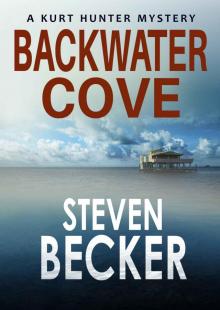 Backwater Cove
Backwater Cove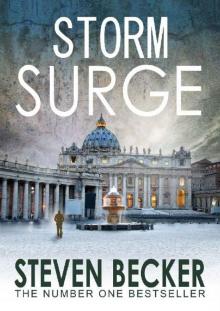 Storm Surge: A Fast Paced International Adventure Thriller (Storm Thriller Series Book 3)
Storm Surge: A Fast Paced International Adventure Thriller (Storm Thriller Series Book 3)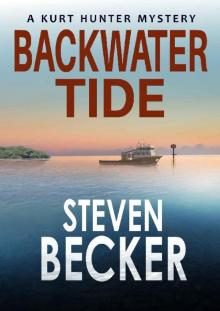 Backwater Tide
Backwater Tide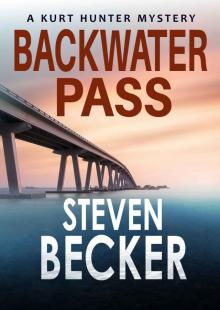 Backwater Pass
Backwater Pass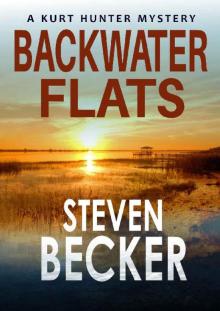 Backwater Flats
Backwater Flats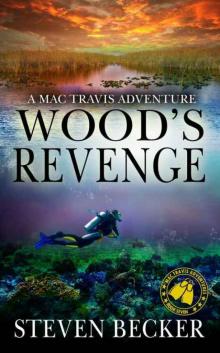 Wood's Revenge
Wood's Revenge Haitian Gold
Haitian Gold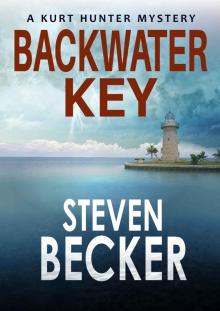 Backwater Key
Backwater Key Wood's Tempest
Wood's Tempest Uncharted Waters
Uncharted Waters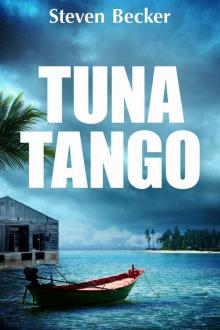 Tuna Tango
Tuna Tango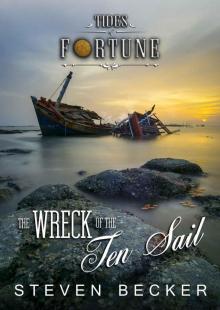 The Wreck of the Ten Sail
The Wreck of the Ten Sail Backwater Bay (Kurt Hunter Mysteries Book 1)
Backwater Bay (Kurt Hunter Mysteries Book 1) Storm Clouds
Storm Clouds Wood's Wall
Wood's Wall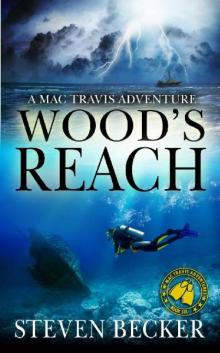 Wood's Reach
Wood's Reach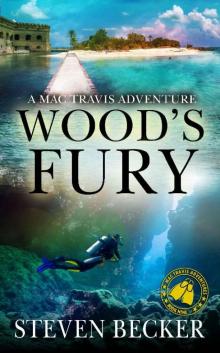 Wood's Fury
Wood's Fury Storm Rising
Storm Rising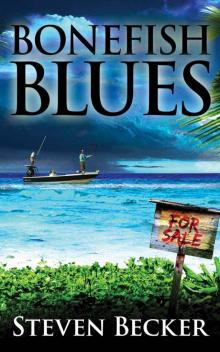 Bonefish Blues
Bonefish Blues Wood's Harbor: Action & Sea Adventure in the Florida Keys (Mac Travis Adventures Book 5)
Wood's Harbor: Action & Sea Adventure in the Florida Keys (Mac Travis Adventures Book 5)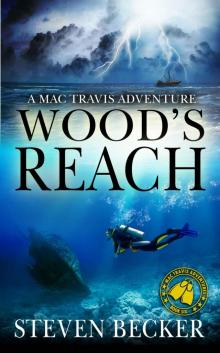 Wood's Reach: Action & Sea Adventure in the Florida Keys (Mac Travis Adventures Book 6)
Wood's Reach: Action & Sea Adventure in the Florida Keys (Mac Travis Adventures Book 6)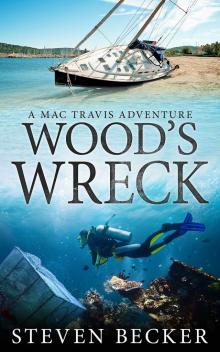 Wood's Wreck
Wood's Wreck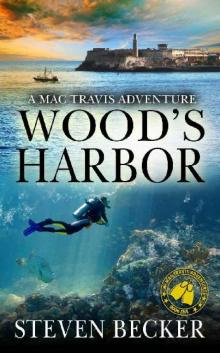 Wood's Harbor
Wood's Harbor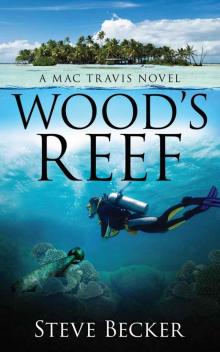 Wood's Reef
Wood's Reef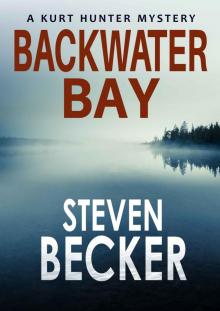 Backwater Bay
Backwater Bay